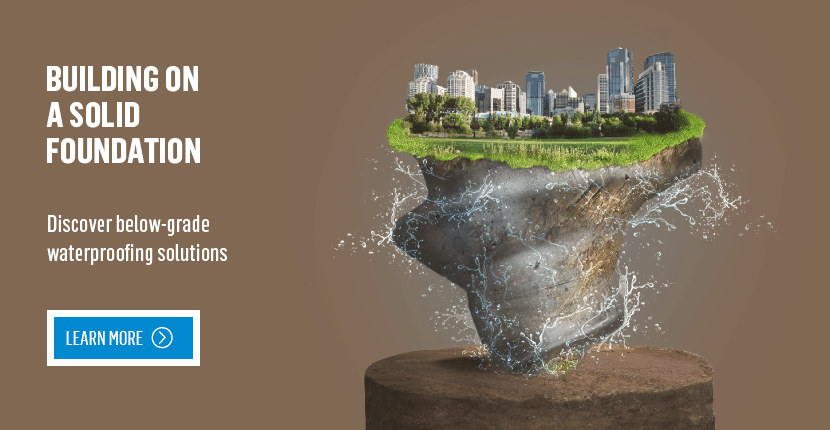
It’s not uncommon for waterproofing to take a backseat when developing plans and specifications for a building. Yet when it comes to protecting a building’s foundation from the impacts of water infiltration, there are good reasons why waterproofing needs to stay top of mind.
The foundation ensures building loads are supported and distributed. It is therefore critical to protect it from water infiltration to avoid cracking and other damage that would have subsequent repercussions on the building.
While the more visible elements of a building tend to receive the most attention, it’s often the unseen components that can have the greatest impact on building performance and sustainability.
Are you hoping to keep those covert risks at bay? Here are a few things to know about protecting your foundation.
Waterproofing vs. Dampproofing
Key to Success
A good initial design begins with good communication between all team members. All team members involved need to be on the same page before and during the project to ensure a successful outcome. Waterproofing needs to be considered at the front end of any building construction project—in the design phase of a project. Designers and architects should consult with waterproofing manufacturers and contractors during the design phase to ensure that all requirements are fulfilled. Many major problems with projects can be traced back to parties failing to talk with one another or pre-construction meetings not being scheduled properly, so take special care to avoid potential oversights early on. When selecting a system design and the materials that will be used for a project, there are a number of questions worth asking yourself in order to make an informed decision.
Consider, for instance, the following:
- What are the site conditions?
- What are the soil conditions?
- What temperature limitations exist?
- What is the hydrostatic pressure at the location?
- What sort of drainage is found on site?
- What will construction sequencing be?
- Are all of the applicable materials compatible?
- What are the code requirements?
- How much is the building expected to move?
- What will be the primary function of the building?
Waterproofing comes with many considerations, each of which needs to be examined carefully to protect critical components and maintain the health of a building. The complexities can be overwhelming, but that’s where having the right expertise and materials can seal the deal.

